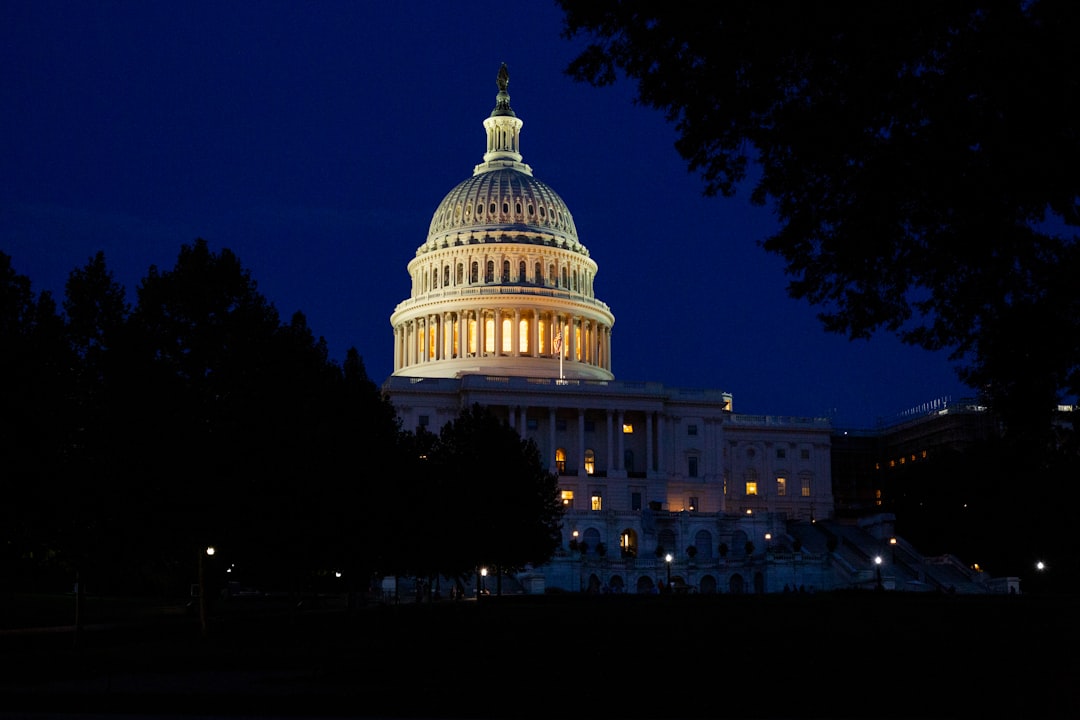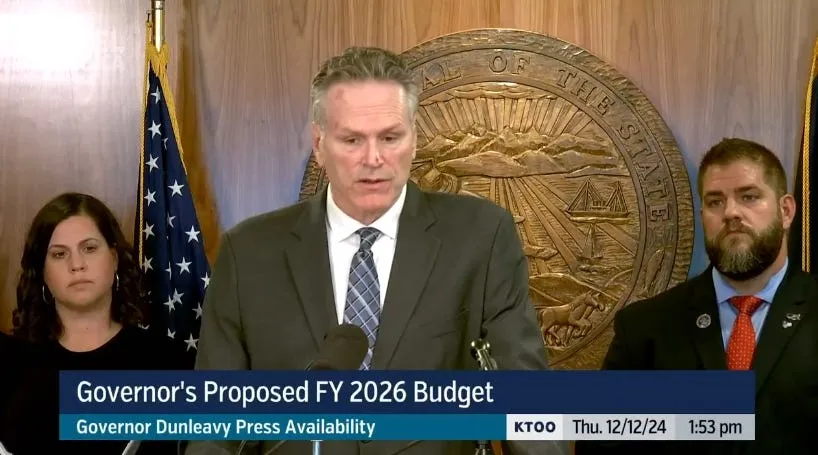'Abundant evidence of anti-union animus'
Another legal loss for Dunleavy.

Good afternoon, Alaska! It’s Tuesday.
In this edition: The Alaska Supreme Court dropped a trio of interesting decisions on Friday, and in this edition, we’ll be unpacking the big one dealing with Gov. Mike Dunleavy’s 2019 attack on union dues under a wildly expansive reading of 2018 U.S. Supreme Court opinion in Janus v. AFSCME. The Alaska Supreme Court not only found the state violated several labor laws but that there was “abundant evidence of anti-union animus” behind the whole thing. Meanwhile, the country is one day closer to default but a step closer to a deal.
Current mood: 🧑🏽⚖️
‘Abundant evidence of anti-union animus’

The tenure of Gov. Mike Dunleavy has been punctuated by one lost lawsuit after another, so the news that the administration has been dealt another pair of losses by the Alaska Supreme Court is probably not all that shocking. Still, the latest decisions—one striking down the administration’s attempt to intervene in the collection of union dues and a second reaffirming the governor cannot sue the Legislature no matter how creative you get—paint an illuminating picture of the Dunleavy administration’s tenuous grasp of the legal system.
Here, I’ll focus on the decision in the union dues lawsuit.
The basics of the case are this: The U.S. Supreme Court in 2018 ruled in Janus v. AFSCME that the government cannot require nonunion employees to pay any form of union dues as a condition of employment. Under former Gov. Bill Walker, the state updated its labor agreements to reflect the change, leaving the dues of employees who voluntarily joined the union unchanged. However, things changed under Gov. Mike Dunleavy and his former Attorney General Kevin Clarkson, who issued a greatly expanded reading of the ruling in late 2019 where he claimed the decision required a whole bunch of immediate changes that generally and conveniently made life for state unions much more difficult.
That included a policy change that required employees to regularly confirm they were waiving their “First Amendment right not to pay union dues and fees” on a form that a superior court judge found was “not neutral.” Also, Kelly Tshibaka spearheaded the messaging campaign as the then-commissioner of Administration. The Alaska State Employees Association, representing more than 8,000 employees, wasn’t notified of the changes, the order notes, but Outside think tanks were.
In all, it was a pretty transparent effort by Clarkson and the Dunleavy administration to run a case to set an even broader precedent to undermine public unions.
It didn’t go over well.
The state immediately sued ASEA hoping to get a declaration they were in the right. ASEA countersued and pretty much won at every stage in the lawsuit.
In the order released Friday, the Alaska Supreme Court affirmed the permanent injunction against Clarkson’s legal advice and Dunleavy’s administrative order implementing the whole thing. It found the administration not only violated the collective bargaining agreement and the state’s labor laws but that it did so with malice.
That finding of malice is essential because part of the state’s defense of its actions is that it couldn’t have violated the state’s labor laws because there was no “anti-union animus” present. However, the Alaska Supreme Court found that line of thinking unconvincing, writing “that it is difficult to imagine how a public employer could attempt to dominate a union or interfere with the formation, existence or administration of a union without having an anti-union animus.”
Here’s the court’s assessment of the situation (emphasis in original):
The State nonetheless argues that there is no evidence in the record that it acted with an anti-union motive. But we see abundant evidence of anti-union animus: The State espoused its sweeping interpretation of Janus and began unilaterally changing dues deduction procedures only after a change in administration; the new administration consulted with Outside special interest groups but did not consult or negotiate with ASEA, with which it had a collective bargaining agreement; the State emailed all employees represented by ASEA to inform them (incorrectly) about their First Amendment rights and about union members’ (fictitious) rights to immediately stop payroll dues deductions, again without first consulting ASEA; the State made changes only to union dues deduction procedures, not to other union-related employee payroll deductions; and the State actually stopped collecting dues from ASEA members outside their contractual revocation windows and did not inform ASEA.
The decision affirms a Superior Court ruling that awards about $450,000 to ASEA and affirms the Superior Court’s permanent injunction barring the state from implementing Clarkson’s flawed legal opinion and Dunleavy’s administrative order.
The Alaska State Employees Association welcomed the ruling, representing more than 8,000 public employees in Alaska. It brought the lawsuit and, in a statement on Friday, blasted the administration for its misplaced priorities.
“This decision makes it clear that the Governor, Attorney General and Commissioner of Administration were wholly motivated by political calculus and anti-union hostility, rather than sound legal footing. It backfired,” said ASEA Executive Director Heidi Drygas. “By pursuing this meritless legal action, the Governor and members of his administration wasted public resources to the tune of millions of dollars rather than invest in the critical public services and public employees that are needed to carry them out.”
Read more: The Alaska Current (me)/The Alaska Beacon/ADN
The Alaska Memo by Matt Buxton is a reader-supported publication. To receive new posts and support my work, consider becoming a free or paid subscriber.
One day closer

The White House and House Speaker Kevin McCarthy announced the framework of a deal to raise the national debt over the weekend that calls for a 1% cap on federal discretionary spending increases (with a 3.5% cap on spending increases), implements new work requirements on social programs like food stamps, goes after unspent covid-19 money, reduces IRS funding and calls for reforms in energy project permitting. They’re now onto the tricky stage of getting it to pass, a problem that greatly mirrors the ordeal the Alaska House just went through.
Basically, the far-right members of the House aren’t particularly thrilled with the plan, and that means Democrats—who aren’t exactly thrilled by the plan, either—will be expected to help get the plan across the finish line ahead of the June 5 deadline before the country is likely to run out of money. Here, it sounds like there’s a sizable coalition of centrist Republicans and Democrats who will push the plan across the finish line, but what it means for the thin Republican majority—which can easily call a no-confidence vote in Speaker McCarthy—will undoubtedly be interesting.
What a potential default means for Alaska isn’t clear, but it doesn’t look good. The Alaska Beacon dug into this issue last week, and the answer is, mostly, we can’t say for sure what it’ll mean, but with a big chunk of the state’s workforce collecting federal paychecks and many more reliant on federal spending, it’s not good.
More: The Alaska Beacon/The Washington Post
Reading list
- Alaska child care providers say funds approved by Legislature are crucial to staying open
- Alaska has more than half of America’s wetlands. A new ruling could change how they’re managed
- A bill to get nurses licensed more quickly in Alaska faces pushback from unions
- The revolt of the Christian home-schoolers
Something fun

The Alaska Memo Newsletter
Join the newsletter to receive the latest updates in your inbox.




